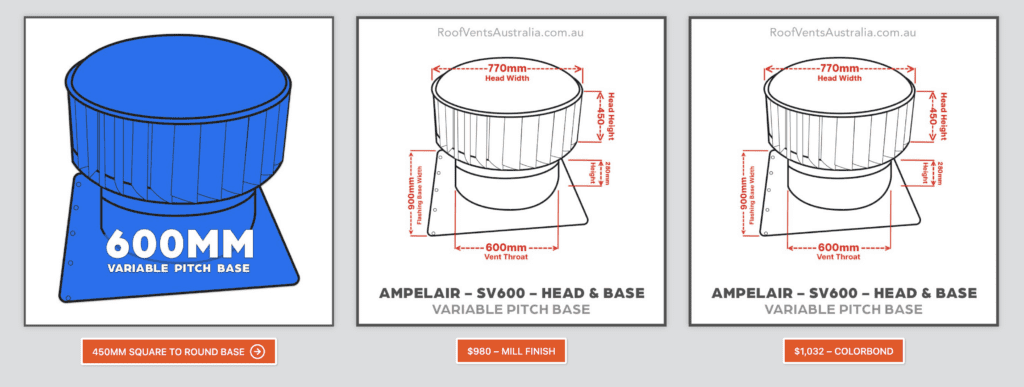Transforming Australian Homes: A Comprehensive Guide to Modern Roofing Solutions


Rain Heads Custom Made Shipped Free Australia Wide – Click Here >
Dambuster Rain Heads Shipped Free Australia Wide – Click Here >
Commercial Industrial Roof Vents 300mm-950mm – Click Here >
Eco-Friendly Roofing Insulation Shipped Free – Click Here >
Gutter Sumps Shipped Free Australia Wide – Click Here >
Introduction
The Australian climate is unique and presents a set of challenges that homeowners must face. From soaring temperatures to heavy rainfall, the extremes can take a toll on the structural integrity of homes. Roofing is one area that can significantly influence not just the longevity of your home but also its energy efficiency and comfort levels. Advances in technology have introduced a variety of modern roofing solutions like Smart Home Roof Vents, Heat-Resistant Roof Sheeting, and Solar Panel Roof Ventilation, among others, that can drastically improve the quality of life for Australians. This article aims to educate homeowners and aspiring builders on the need and benefits of modern roofing solutions specific to Australia’s diverse states and territories.
Heat-Resistant Roof Sheeting
Australia is a land known for its extreme temperatures. Cities like Darwin in the Northern Territory regularly experience temperatures above 30°C, while even cooler states like Tasmania aren’t completely immune to hot spells. Traditional roofing materials, such as asphalt shingles or wood, can deteriorate quickly under such conditions. Heat-resistant roof sheeting made of metals like zincalume or Colorbond are an excellent alternative. A 2018 study by Australia’s Commonwealth Scientific and Industrial Research Organisation (CSIRO) showed that metal roofs with reflective coatings could reduce indoor temperatures by as much as 5-10°C, contributing to significant energy savings1.
Waterproof Roof Vents
Heavy rainfall is a common phenomenon, particularly in the wet season in states like Queensland and New South Wales. Waterproof roof vents ensure that moisture does not seep into your home, reducing the risk of mould and water damage. According to the Australian Building Codes Board (ABCB), specific guidelines and compliance measures are in place for the installation of waterproof roof vents to withstand Australian climatic conditions2.
Solar Panel Roof Ventilation
Given Australia’s abundant sunshine, especially in Western Australia and South Australia, solar panel roof ventilation systems are an excellent investment. These systems draw power from solar panels to operate fans that actively circulate air, preventing heat accumulation in the attic space. The Australian Renewable Energy Agency (ARENA) has shown that the use of solar-powered ventilation systems can reduce a household’s annual electricity consumption by approximately 10%3.
Vented Skylights for Roof
Natural light can make an enormous difference to the ambience of your home, and vented skylights serve the dual purpose of lighting and ventilation. Suitable for states with colder climates like Victoria or Tasmania, these installations can reduce the need for artificial lighting and heating. A study by the University of Sydney has demonstrated that the strategic placement of vented skylights can save up to 35% of annual energy costs related to lighting4.
Ducted Roof Ventilation Systems
For states like New South Wales and Queensland, where humidity can be a significant issue, ducted roof ventilation systems provide a solution. These systems distribute air evenly, reducing the buildup of humidity and making the home more comfortable. The Australian Institute of Refrigeration, Air Conditioning and Heating (AIRAH) recommends these systems for their energy efficiency and ability to maintain a stable indoor climate5.
Seamless Box Gutters
The traditional gutters often become a breeding ground for leaves, debris, and pests. Seamless box gutters, designed with fewer joints and crevices, reduce this problem. Furthermore, they are custom-made to fit your home, which makes them a popular choice in all Australian states. The Australian Standards (AS/NZS 3500.3:2018) specify the design and installation requirements for such drainage systems6.
High-Density Roof Insulation
Insulation plays a critical role in maintaining a home’s internal temperature. High-density roof insulation materials like polyisocyanurate (PIR) boards or spray foam insulation are far more effective than traditional fiberglass options. According to Sustainability Victoria, an appropriately insulated home could save hundreds of dollars in energy bills annually7.
UV Protection for Roof Sheeting
UV radiation can deteriorate roofing materials over time. Given Australia’s high levels of UV radiation, especially in states like Queensland and Western Australia, UV-protected roof sheeting is a smart choice. Materials like polycarbonate roof sheets often come with a UV protective layer that can extend the roofing material lifespan considerably.
Toilet Ventilation Ducts
Often overlooked, adequate toilet ventilation is crucial for indoor air quality. In multi-story buildings common in cities like Sydney and Melbourne, ducted systems can efficiently remove odours and moisture. The National Construction Code (NCC) provides a detailed guide on compliance requirements for toilet ventilation ducts in residential buildings8.
Conclusion
Australia’s varying climatic conditions across its states and territories necessitate diverse roofing solutions. Implementing modern roofing technologies like Smart Home Roof Vents, Heat-Resistant Roof Sheeting, and High-Density Roof Insulation can drastically improve your home’s lifespan and living conditions. Government bodies like the Australian Building Codes Board and institutions like CSIRO and ARENA are excellent resources for further reading and grants. Remember, the roof is not just the crown of your home but also a shield that protects it. Make a smart choice today for a better, more sustainable tomorrow.
References
Disclaimer: This article is intended for educational purposes and it’s crucial to consult professionals before making any significant changes to your home.
Footnotes
- Commonwealth Scientific and Industrial Research Organisation (CSIRO). (2018). Reflective Coatings for Roof Thermal Performance. ↩
- Australian Building Codes Board (ABCB). (2019). National Construction Code. ↩
- Australian Renewable Energy Agency (ARENA). (2020). Solar-Powered Ventilation Systems and Household Electricity Consumption. ↩
- University of Sydney. (2016). Energy-Efficient Skylight Systems. ↩
- Australian Institute of Refrigeration, Air Conditioning and Heating (AIRAH). (2021). Guide to HVAC Design for Humidity Management. ↩
- Australian Standards (AS/NZS 3500.3:2018). Plumbing and Drainage Part 3: Stormwater Drainage. ↩
- Sustainability Victoria. (2019). Home Insulation Guide. ↩
- National Construction Code (NCC). (2021). Guidelines for Ventilation in Buildings. ↩
